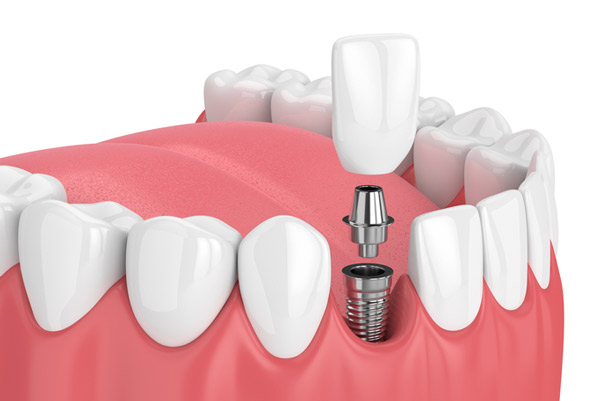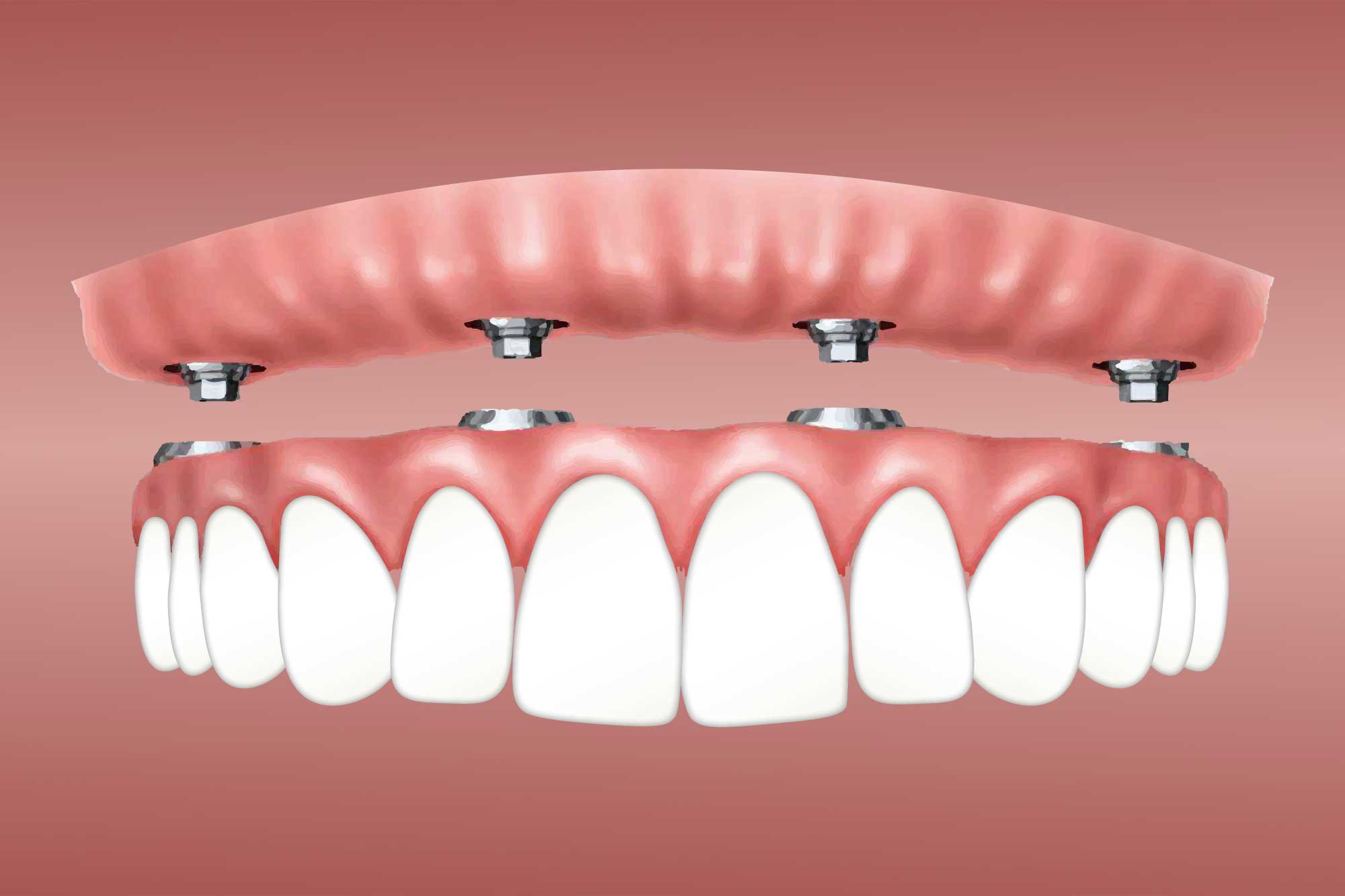Dentists Alexandria OH The Best Dental Implant Services
Dental implants have revolutionized restorative dentistry, providing a dependable alternative to conventional strategies for replacing missing teeth. The integration of dental implants with the jawbone is anchor a posh biological course of often imp source identified as osseointegration. This process not solely anchors the implant securely but view website also helps preserve jawbone health, preventing the bone loss often related to missing teeth.
The dental implant itself is typically made from titanium, a biocompatible material that the body accepts. When an implant is positioned within the jaw, it is designed to carefully mimic the root of a natural tooth, which is crucial for effective integration. The titanium surface encourages the expansion of bone cells, enabling the jawbone to bond with the implant over time.
Dental Care Associate Johnstown OH Step-by-Step Guide to Dental Implant Procedures

Several levels constitute the osseointegration process. Initially, when the implant is surgically placed into the jaw, a healing period is required for the encompassing bone to begin transforming. During this time, the bone grows around the implant, creating a solid and steady foundation. This healing time can differ, sometimes lasting several weeks to a couple months, depending on numerous components, including the individual's overall health and the precise location of the implant.
The function of surrounding bone quality is crucial. High-density bone typically offers a better environment for osseointegration in comparison with lower-density bone. Specialists often evaluate the standard and amount of bone earlier than the implant placement to determine the best course of action, which may involve bone grafting procedures in instances of inadequate bone quantity. Grafting enhances the possibilities of successful integration by making a more strong base for the implant.
The organic mechanisms behind osseointegration contain numerous mobile activities. Osteoblasts, the cells liable for bone formation, migrate to the implanted area and begin to put down new bone materials. Simultaneously, the surface of the titanium implant undergoes modifications that facilitate this bonding course of. Some newer implant designs incorporate surface modifications to additional enhance organic integration.
Mono Implants Galena OH The Best Dental Implant Services
Throughout the mixing course of, the position of blood provide can't be overstated. An adequate blood provide nourishes the bone and ensures the proper functioning of the cells involved within the healing and integration course of. Improved blood move leads to faster therapeutic and better outcomes, which is why surgical techniques and aftercare typically prioritize maintaining or enhancing blood circulation to the location of the implant.
Improvements in surgical techniques also contribute significantly to the success charges of dental implants - Dentist Condit OH. Minimally invasive methods and guided implant surgery enable for extra precise placement of implants, lowering trauma to the surrounding tissues and potentially rushing up the healing time. The less trauma experienced by the jawbone can result in a extra favorable environment for osseointegration
Orthodontics Galena OH Frequently Asked Questions About Dental Implants

How a person maintains their oral hygiene after receiving an implant can considerably influence integration success. Proper care around the implant website helps prevent infections, which might disrupt the healing course of. Regular dental check-ups are also vital to watch the health of both the implant and the encircling gum and bone tissues.
Long-term success with dental implants is often linked to components similar to way of life choices. Patients who smoke or have uncontrolled diabetes could experience lower rates of osseointegration. These conditions intervene with healing and blood provide, making it critical for individuals considering implants to discuss their health history with their dentist.
After the successful integration of the implant, the subsequent phase entails placing the prosthetic restoration, corresponding to a crown. The last restoration must fit comfortably and functionally combine with the existing dentition. Dental Clinic Centerburg OH. Proper alignment and occlusion play important roles in how properly the implant will carry out over time
Johnstown Dental Galena OH Permanent Dental Implants
Dental implants present a lasting solution that helps protect the integrity of the jawbone. When a tooth is misplaced, the bone that after anchored its root begins to deteriorate. Implants stimulate the bone equally to natural teeth, triggering the jaw to maintain up its density and strength. This stimulation is essential for stopping the sunken facial appearance that usually accompanies tooth loss.
In conclusion, the combination of dental implants with the jawbone entails a complex interaction of organic and mechanical factors. Understanding the osseointegration course of can empower people to make informed choices about their dental health. By appreciating the importance of selecting a talented dental skilled and adhering to post-operative care, patients can obtain optimal outcomes and enjoy restored function and aesthetics for many years to come back.

- Dental implants mimic the structure of natural teeth and provide a stable foundation by integrating with the jawbone through a process referred to as osseointegration.
- The biocompatibility of titanium, generally used for dental implants, performs a crucial position in selling successful bonding with bone tissue.
- Osseointegration usually begins within a couple of weeks post-surgery, with the implant floor gradually changing into enveloped by bone cells.
- The mechanical stability of implants is enhanced by their surface roughness, which encourages bone development and improves the mixing course of.
- Immediate loading of implants can be possible in certain instances, relying on bone density and the patient’s total dental health.
- Over time, the jawbone responds to the presence of an implant by present process remodeling, contributing to the long-term success of the process.
- Factors such as oral hygiene, smoking habits, and systemic health conditions can considerably impression the integration strategy of dental implants.
- Regular follow-ups and imaging techniques, similar to X-rays, can help monitor the success of osseointegration and detect potential complications early.
- The preservation of surrounding bone structure is enhanced by the stimulation provided by dental implants, which might help prevent bone loss in adjacent areas.
- Successful integration not solely restores performance to the tooth but additionally contributes significantly to the aesthetics of the affected person's smile and facial structure.undefinedWhat are dental implants and how do they work with the jawbone?undefinedDental implants are titanium posts surgically inserted into the jawbone to serve as synthetic tooth roots. Once placed, they bear a course of called osseointegration, where the jawbone naturally fuses with the implant, making a steady foundation for the replacement tooth.
How does osseointegration occur?undefinedOsseointegration is a biological course of where bone cells develop and attach to the floor of the dental implant. This sometimes takes a number of months, throughout which the implant turns into firmly anchored in the jawbone, ensuring energy and stability for the bogus tooth.
Johnstown Dental Granville OH Dental Implant Procedure: What You Need to Know Before Surgery
What components affect the success of dental implant integration?undefinedKey factors include the quality and quantity of the jawbone, the patient's overall health, and oral hygiene practices. Adequate bone density is essential, as inadequate bone could impede profitable integration.
Is the pain throughout dental implant placement significant?undefinedMost sufferers report minimal discomfort in the course of the process, as native anesthesia is used. Post-operative pain is mostly manageable with over-the-counter pain reduction drugs, and most discomfort subsides within a number of days.
How long does the integration course of take?undefinedTypically, osseointegration takes about three to six months. However, this will vary based on individual therapeutic processes and the particular conditions of the jawbone.
Can anybody get dental implants?undefinedMost individuals are candidates for dental implants; nonetheless, sure conditions similar to uncontrolled diabetes or severe gum disease might have an effect on eligibility. A thorough analysis by a dental professional is necessary to determine suitability.
Dental Care Associate Johnstown OH Step-by-Step Guide to Dental Implant Procedures
What can be done if there isn't sufficient jawbone for integration?undefinedIf there is inadequate bone, procedures like bone grafting may be carried out to reinforce the jawbone. Once the graft heals, dental implants can then be placed, permitting for profitable integration.
Are there long-term care issues after getting dental implants?undefinedYes, maintaining glorious oral hygiene is significant for the longevity of dental implants. Regular dental check-ups and cleanings also help prevent issues and ensure the ongoing health of the surrounding bone and gum tissue.
Dental Clinic Galena OH Dental Implant Benefits
How do dental implants compare to other tooth replacement options?undefinedDental implants are sometimes thought of superior to dentures and bridges as a result of their sturdiness, stability, and the preservation of jawbone health. Unlike different options, implants fuse with the jawbone, which helps maintain bone density and facial structure.